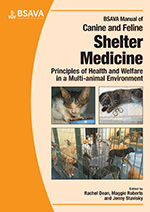
Full text loading...

When practising shelter or charity medicine, often the population concerns are of prime importance; however, it is essential to bear in mind individual factors too. This chapter covers reasons for neutering shelter animals, physiology of kittens and puppies, anaesthesia, surgical approach and evaluating the impact of preadoption neutering in shelters. Quick reference guide: General anaesthetic protocols for early neutering.
Optimizing neutering programmes, Page 1 of 1
< Previous page | Next page > /docserver/preview/fulltext/10.22233/9781910443330/9781910443330.6-1.gif

Full text loading...




















